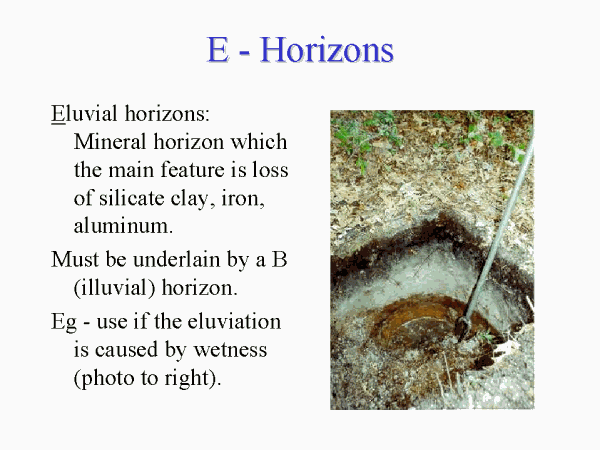| First Previous Next Last Index Home Text Slide 5 of 14 |
 |
Notes:
E horizon: is a mineral horizon in the upper part of the soil. Typically present only in forested areas it underlies an O or A horizon. It is a light colored, leached horizon.
Field criteria:
Hydric Soil Concerns: E horizons (and Spodosols in general) may cause problems for hydric soil determination, the gray color of the E can be mis-interpreted for a gleyed horizon. E horizons can occur in upland soils as well as hydric soils. Always look below the E for signs of wetness and see if the wetness morphology connects to the surface. If the E horizon formed by saturation and reduction by a water table, call it an Eg horizon to differentiate it from an upland E.
From Soil Taxonomy:
E horizons: Mineral horizons in which the main feature
is loss of silicate clay, iron, or aluminum,
or some combination of these, leaving a concentration of
sand and silt particles. These horizons exhibit
obliteration of all or much of the original rock structure.
An E horizon is most commonly differentiated from an underlying B horizon in the same sequum by a color of higher value or lower chroma or both, by coarser texture, or by a combination of these properties. In some soils the color of the E horizon is that of the sand and silt particles, but in many soils coatings of iron oxides or other compounds mask the color of the primary particles. An E horizon is most commonly differentiated from an overlying A horizon by its lighter color. It generally contains less organic matter than the A horizon. An E horizon is commonly near the surface below an O or A horizon and above a B horizon, but the symbol E can be used for eluvial horizons which are within or between parts of the B horizon, or which extend to depths greater than normal observation if the horizon is pedogenic.